I last visited the Botanic Gardens station four years ago, in the winter of 2008 … but recently had another chance to see a fascinating place which lies deep in the city’s affections. I can recall regular “Is the Botanics accessible?” threads on the Hidden Glasgow forum in the early years of the millennium, but by then it was already rooted in folklore. A background to the station’s early life is gleaned from Frank Worsdall’s book, “The City that Disappeared”: the Botanic Gardens railway station is part of a long-closed line which runs underneath the west end of Glasgow: it was last used in its original capacity in 1939, after which the surface buildings became a nightclub, and the tunnels were used by goods trains until 1964, after which the Glasgow Central Railway’s tracks were lifted.
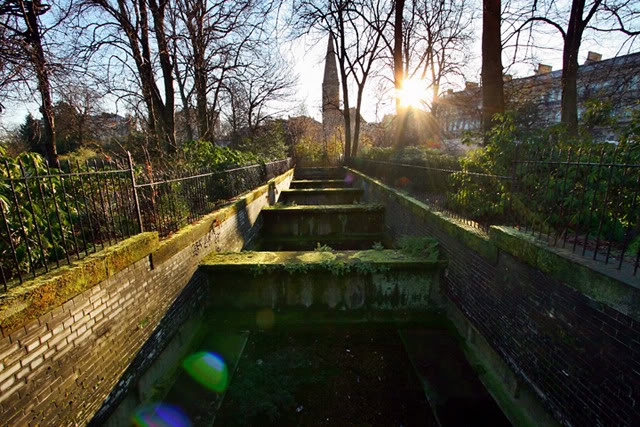
The eastern lightwell from ground level 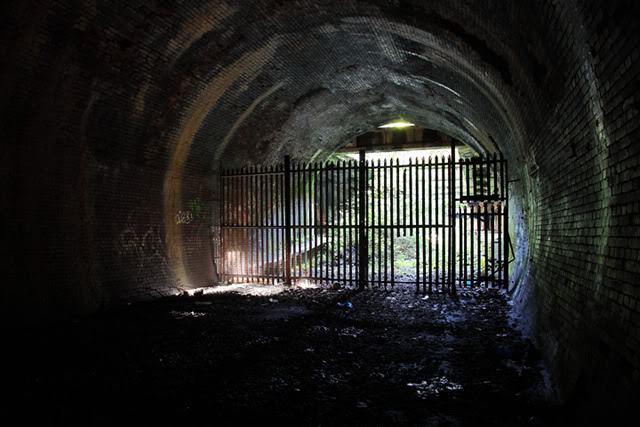
Kirklee tunnel portal
The Glasgow Central Low-Level route was mainly built using the 'cut-and-cover' method, so the line runs in a shallow tunnel for three quarters of a kilometre directly under Great Western Road. The track is exposed at the station, creating a couple of ventilation shafts which are also giant lightwells. The Botanic Gardens station was designed by James Miller, a Perthshire architect who trained with Andrew Heiton before he joined the Caledonian Railway Co. The surface building at the Botanics was a strange affair, a rustic cottage with two minarets – quite a contrast to his later St Enoch Square Underground Station – but it burned down in 1970. Everything below ground remains, from the surprisingly intact concrete platforms, to the vaults spanning between the cross beams, faced in white glazed bricks.
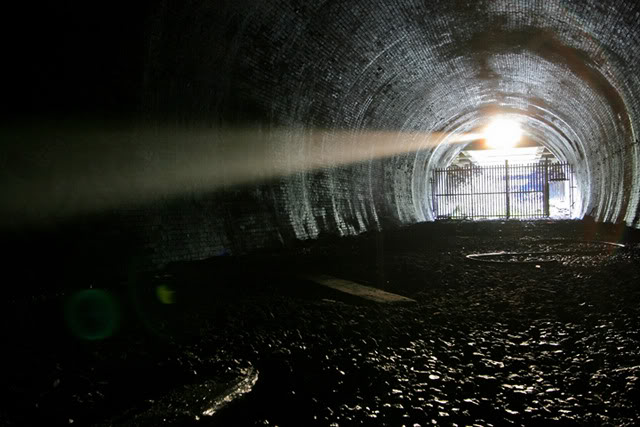
The midwinter sun casts a ray deep into the tunnel
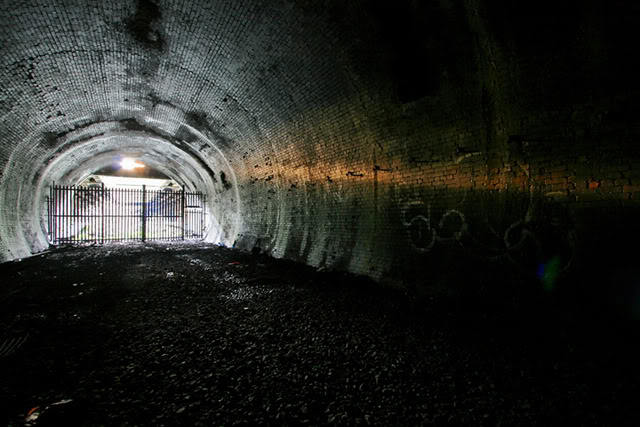
Fading embers of the midwinter sun
After closure, the station became disused, but never truly abandoned. The tunnels were regularly used by ravers during the 1990’s, and in 2001 the station became the centrepiece of Hamish McDonald’s novel, “The Gravy Star”, about a modern-day recluse who takes refuge here from modern society. Farchar MacNab retreats to "a black airless hole with pigeons for neighbours and a park full of beauty on the roof of his world". Scared of the light, he leaves his tunnel only at night for the safety of The Coffin - Glasgow's first death-themed pub - and The Gravy Star, a cafe where people don't stare at him. When his epiphany comes, he leaves the darkness of the tunnels and takes a journey across Europe, which also illuminates the terrible damage done to Glasgow by Thatcher’s government.
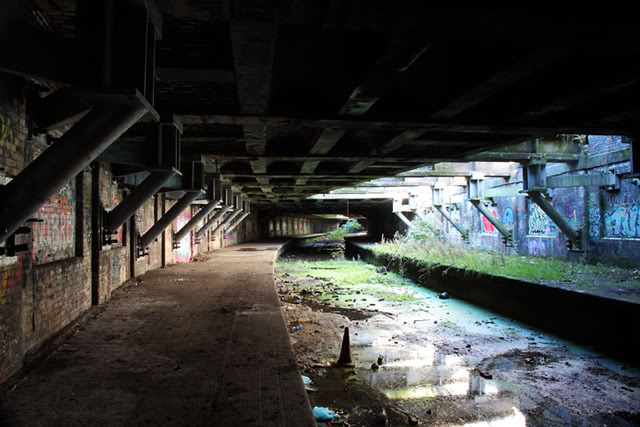
The station platform in 2012
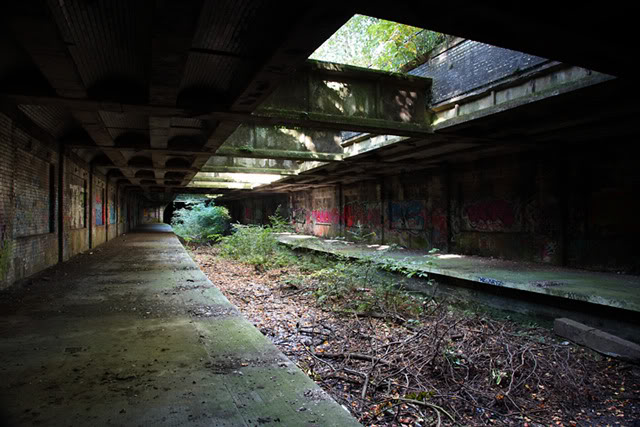
The station platform in 2008
Although Alasdair Gray’s “Lanark” is still the best novel of and about Glasgow, “The Gravy Star” joins Jeff Torrington’s “Swing Hammer Swing” and Archie Hind’s “Dear Green Place” to show it sloughing off its industrial clothes as it became a different kind of city. Just how different was illustrated when we surfaced, like Farch, from the underground, and headed across the gardens towards the Kibble Palace. The first figures we saw were a hipster in a homburg hat and winklepicker shoes, with his girlfriend in tow leading a French Bulldog. It is hard to imagine a less Glaswegian breed of dog..
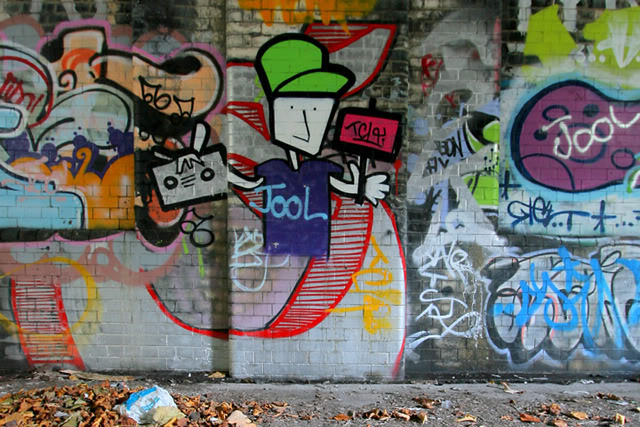
A colourful “piece” from 2008
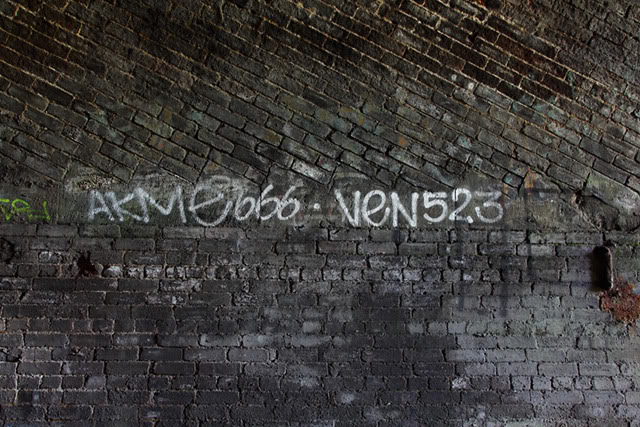
Tagging on the skew arch brickwork at the Kelvinbridge station portal
I worried that the huge fabricated steel knuckle braces which were installed a year after my last visit would ruin the atmosphere of the station, but I admit that they add another layer to the composition, especially now they’ve been integrated by decorating them with a coat of graffiti. Perhaps the most striking parallel is with New York: just as the City Union Line is Glasgow’s “High Line”, the Botanic Gardens station represents this city’s “Freedom Tunnels” complete with screeds of graffiti and shafts of sunlight penetrating down from the public park above. The High Line in Manhattan is a celebrated example of old railway infrastructure – simultaneously very visible, yet difficult to reach – made accessible and brought into the public realm. Nevertheless it loses something in the transition, as you will see when you compare images churned out by the publicity machine of Diller Scofidio + Renfro, with the melancholy photos which Joel Sternfeld took years before the work took place, when the overgrown trackbed wound through the West Side at second floor level as a linear wilderness.
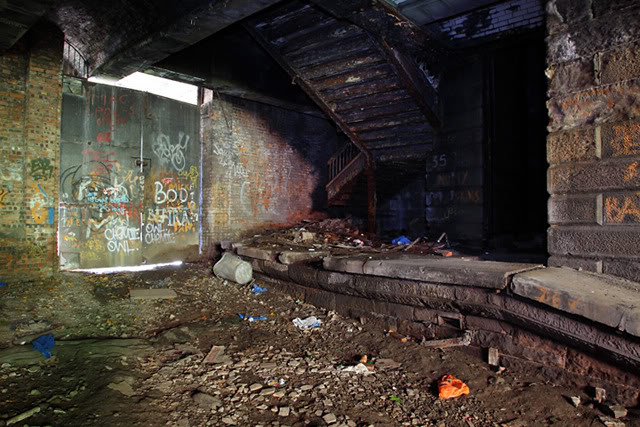
The old Kelvinbridge station platform
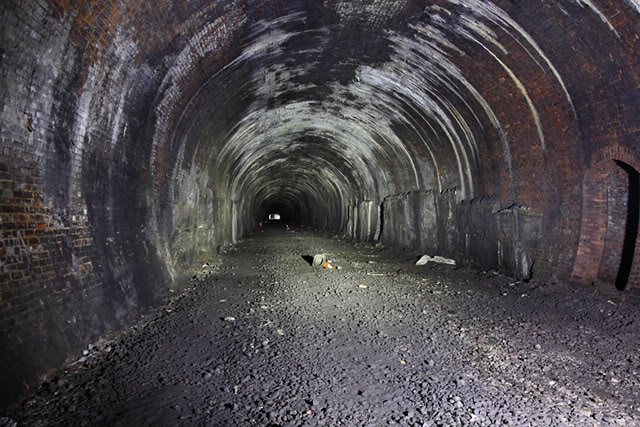
Kelvinbridge tunnel, around 700 metres long
The Botanics is perhaps the perfect example of a ghost station, made all the more enigmatic since you can gain glimpses of it through the ventilation shafts in the gardens, and through the railings of the tunnel portal. From previous years, I recall a couple of thesis projects by students at the Mac, one to revive the Botanic Gardens station as part of a railway system, and another for an entertainment venue, probably on the back of Stefan King’s thwarted scheme of 2007 to convert the station platforms into a nightclub. Before that, Strathclyde Passenger Transport laid plans to re-open the station and tunnels as part of their "Strathclyde Tram" scheme in the mid 1990s: that similarly came to nothing. Perhaps the station should be maintained as it is now, a walk through the darkness towards those giant lightwells and a trackbed overgrown with etiolated shrubs.
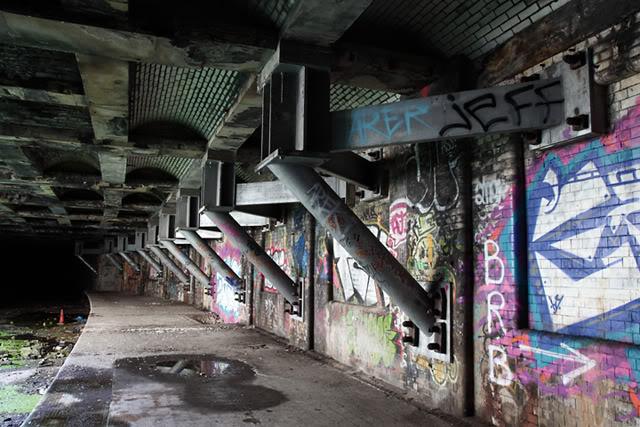
The knuckle braces, supporting the edge of Great Western Road
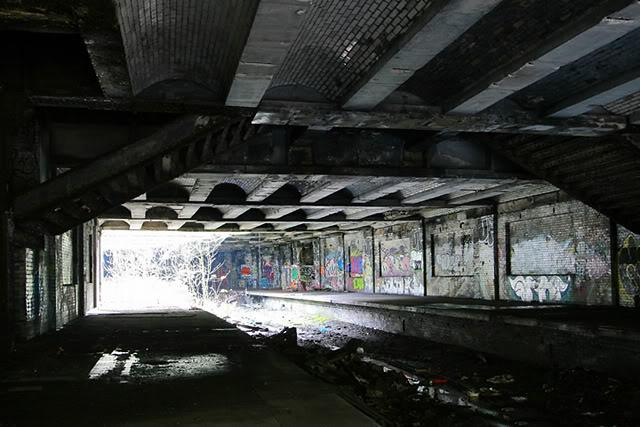
A final glimpse along the platforms…
Eventually, all traces of Botanics will disappear: if the tunnels aren’t brought back into use, they may be backfilled to prevent ongoing maintenance costs. So far, the giant steel knuckles are the only evidence of structural problems, but the trackbed to the north-west of Kirklee tunnel has already been built on, part of the endless demand for flats in the West End. Yet the wildcard which has preserved the station and platforms for over 70 years is the speculation of transport planners and council chiefs – proponents of reopening old rail lines, building tram networks, Glasgow’s Crossrail – schemes which may never happen, but can never be completely discounted. Unlike a previous Lord Provost’s madcap plan to build a cable car system from George Square to Port Dundas...
All photographs are copyright Mark Chalmers - none are in the public domain
No feedback yet
Contact | Help | Latest comments | RSS 2.0 / Atom Feed / What is RSS? | Powered by b2evolution
This collection ©2025 by Mark Chalmers | Blog skin | Multi-blog engine